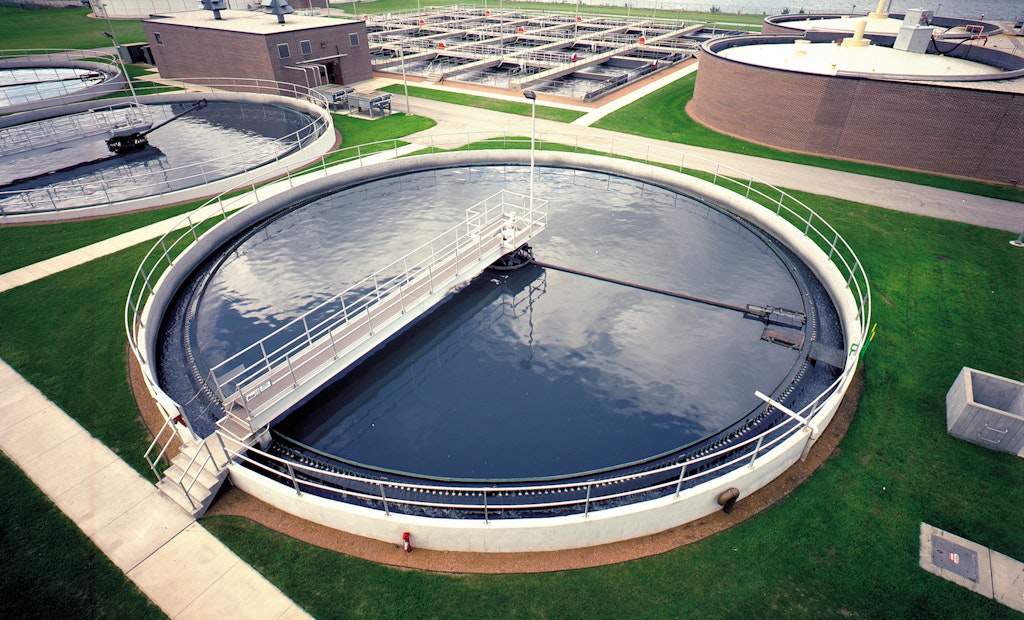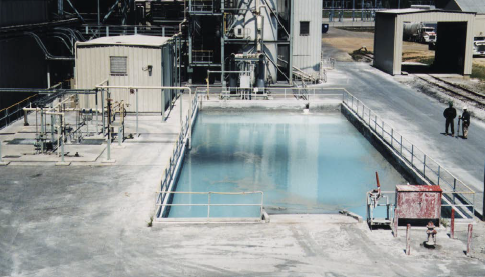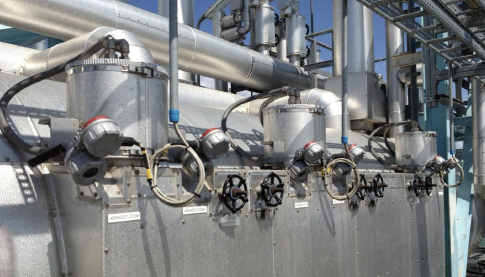In water and wastewater operations, knowing exactly what’s happening inside your tanks, wells, and channels is critical. Level measurement ensures pumps run efficiently, tanks don’t overflow, and solids are processed safely, all while helping you meet strict environmental regulations.
At TechStar, we work alongside operators and engineers to design level measurement systems that deliver dependable performance in the toughest conditions. From clean water tanks to sludge thickeners, we provide solutions built for accuracy, integration, and long-term reliability.
Read More
Topics:
Level Solutions,
Wastewater,
water,
clarifier level sensor
A major gas processing plant faced operational inefficiencies due to the need for manual level measurement in their sewage water drain collection pit. The plant required personnel to manually check the pit level and then, depending on the present level in the pit, call a collecting vehicle to drain the sump, leading to delays, inefficiencies, and safety concerns. To enhance automation and remote monitoring, the customer sought a continuous, non-contact radar solution to eliminate human error and improve response time.
Read More
Topics:
Level Solutions,
radar,
Magnetrol
In the power generation industry, reliability and efficiency are critical. This case study examines a Combined Cycle Power Plant (CCPP) that supplies electricity to approximately two million households daily with a total production capacity of 1,410 megawatts. The plant operates with three Combined Cycle Units (CCUs), each comprising a steam generator with heat recovery, a gas turbine, a steam turbine, and a generator. To ensure seamless operation, the plant integrated SIL Certified AMETEK LMS Magnetrol branded Guided Wave Radar (GWR) transmitters as a key component of their level measurement strategy.
Read More
Topics:
Level Solutions,
radar,
guidedwave,
Magnetrol
On a recent visit to evaluate several level transmitters on chemical storage applications at a new combined cycle power plant, we had the opportunity to work with the EPC firm, plant personnel and the chemical supplier. This provided an interesting look at the level instrumentation package for the chemical storage side of things from an engineering perspective, as well as from a daily operations point of view.
Read More
Topics:
Level Solutions,
Magnetrol
When should you use Ultrasonic? And when is Radar more suitable? Thanks to our industry leading technology, and built-in DATEM echo discrimination algorithms in our software, you can usually count on ultrasonic level sensors to get the job done for you. However, there are some instances where you want to consider using a radar sensor.
Read More
Topics:
Level Solutions,
radar,
Pulsar
A bridle is a vertical pipe connected to the side of a storage tank or process vessel, typically with side/side or side/bottom connections. Because the fluid inside the bridle will rise and fall equally with the level of fluid inside the tank or vessel, the bridle has been adapted for level measurement on a broad scale.
Read More
Topics:
Level Solutions,
Magnetrol,
Orion Instruments,
MLI
The magnetic level indicator is now widely used throughout process industries as an effective level control device. A magnetic level indicator is often used in applications where a sight glass (or glass sight gauge) is either ill-suited based on process variables or is underperforming based on plant requirements. These can include enhanced safety for personnel; environmentally risky situations including media leakage or fugitive emissions; need for maintenance reduction; or need for high visibility from a distance. Typical shortcomings of glass sight gauges include:
Read More
Topics:
Level Solutions,
Magnetrol,
Orion Instruments,
MLI
Natural gas can travel through thousands of miles of pipeline. In order to avoid pressure reductions and the resulting slowdowns caused by distance, friction, and elevation, natural gas must be pressurized. Compressors placed at key intervals keep the natural gas moving evenly and reliably. These compressors are generally grouped in stations, which are strategically located along the pipeline networks that transport and store the gas.
A typical compressor station consists of an inlet scrubber to collect liquids and slugs that may have formed in the gas pipeline. These compressor scrubbers have a primary section where liquids and solid parts are separated from the gas stream, and a secondary section where oil mist is removed.
Read More
Topics:
Level Solutions,
radar,
Magnetrol
Your refinery has options when revamping Delayed Coker Units. This was recently realized for a customer of ours, one of the biggest refineries in the United States. They have two delayed coking units. DCU 1 which consist of a 4 drum coker and DCU 2, which consist of a 6 drum coker. All 10 drums currently were using our competitors level system for measurements.
Read More
Topics:
Level Solutions,
Berthold
Over the last 25 years, there have been significant advancements in level measurement technology. Accuracy, repeatability, linearity, resolution, and reliability have all seen step-change advances as digital signal processing (DSP), power management, and microprocessor improvements have led to advancements in instrumentation with the end result of creating more value for end users on a cost per point basis. Those advances have enabled companies, plants and operators to consider new and unique ways to deploy instrumentation. One choice, which has seen more use, is the utilization of modular instrumentation bridles which allow for flexibility, adaptability and customization, in greenfield or brownfield situations. This article will address some of the benefits and challenges associated with bridle measurement.
A bridle is an externally mounted chamber (via process connections) with the ability to accommodate a variety of process connections allowing for a wide variety of instrumentation[PW1] , including. Bridles can be isolated from the main tank using valves which allows for maintenance (if allowed by the plant) without interrupting the process. Instrument bridles are commonly outfitted with level switches and/or continuous level transmitter technology including (but not limited to) Guided Wave Radar, Magnetostrictive and Displacers. This post will also address Magnetic Level Indicators (MLI), which are a popular form of externally mounted visual indication.
Interface Measurement in a Bridle
A tank filled with two different liquids is common in the process industries. Typically, a bridle will have two process connections, but in a liquid-liquid interface application, if the bridle is not operated under flooded conditions (liquid reaching the upper process connection), the upper liquid layer may become trapped on top of the lower layer with no way out. The fluid levels will balance based on density, but since the upper material would be lighter than water, the levels in the chamber and vessel will not be the same. This error will be proportional to the Specific Gravity (S.G.) difference between the two fluids. A common solution to this problem is to add a third (middle) process connection and a good rule of thumb is to ensure that each fluid is in contact with a process connection at all times.
Another liquid-liquid interface challenge that can arise is the presence of an emulsion layer. Particularly in applications with a short retention time in the vessel, the two liquids can mix together and form a rag or emulsion layer. Depending on the application and the medias, an emulsion layer can range in size from a few inches to several feet. The S.G. gradient that exists within this layer can challenge density-based measurement devices such as displacers and float-based MLIs. However, MLI floats can be designed so they sink through the upper liquid layer and float on the lower layer. Even in the presence of a large emulsion layer, the float would position itself within the layer and continuously provide indication of the float location. Do we want to clarify this by indicating minimum SG delta’s and also float length (floats can interfere with each other if there is not enough space between the floats to move freely)
Effects of Temperature on Level Measurement
When an MLI or bridle is connected to the side of a vessel, a temperature difference in the liquid can be expected. Depending on the media, the density can increase or decrease, which sometimes results in a slight measurement error. For example, hot water in a vessel would be slightly cooler in an offset or externally mounted bridle or MLI. The liquid level in the bridle would be marginally lower than in the vessel because its density has been increased due to the cooling. Ambient temperatures play a major role in determining the severity of this gradient. In the hot water example, the gradient would be much more pronounced in the winter season versus the summer. Anyone specifying an MLI or bridle-mounted instrumentation should be aware of this effect, as well as understand the expected temperature gradient for each installation.
When utilizing buoyancy-based technologies, the measurement in the MLI or bridle will be affected when the media density changes. With an MLI, the float is typically designed for one S.G. If the float design is based off of the S.G. of the liquid in the vessel, the float would experience a small offset when the liquid enters the MLI. This is particularly important on start-up. This is because the cooled liquid in the MLI now has a higher density than what the float was designed for and this higher density will cause the float to sit higher than normal in the liquid. Orion Instruments can provide accessories for its level instruments to help mitigate this temperature effect; these include insulation, heat tracing, or a float projection curve used to anticipate error due to S.G. variation.
In conclusion, it’s important to understand how properties such as temperature, density, and distance have an effect on level measurement in bridles. In most cases, the realized error is marginal; however, it is worth the effort to understand what potential changes you can expect in your process.
Read More
Topics:
Level Solutions,
Magnetrol,
Orion Instruments,
MLI










